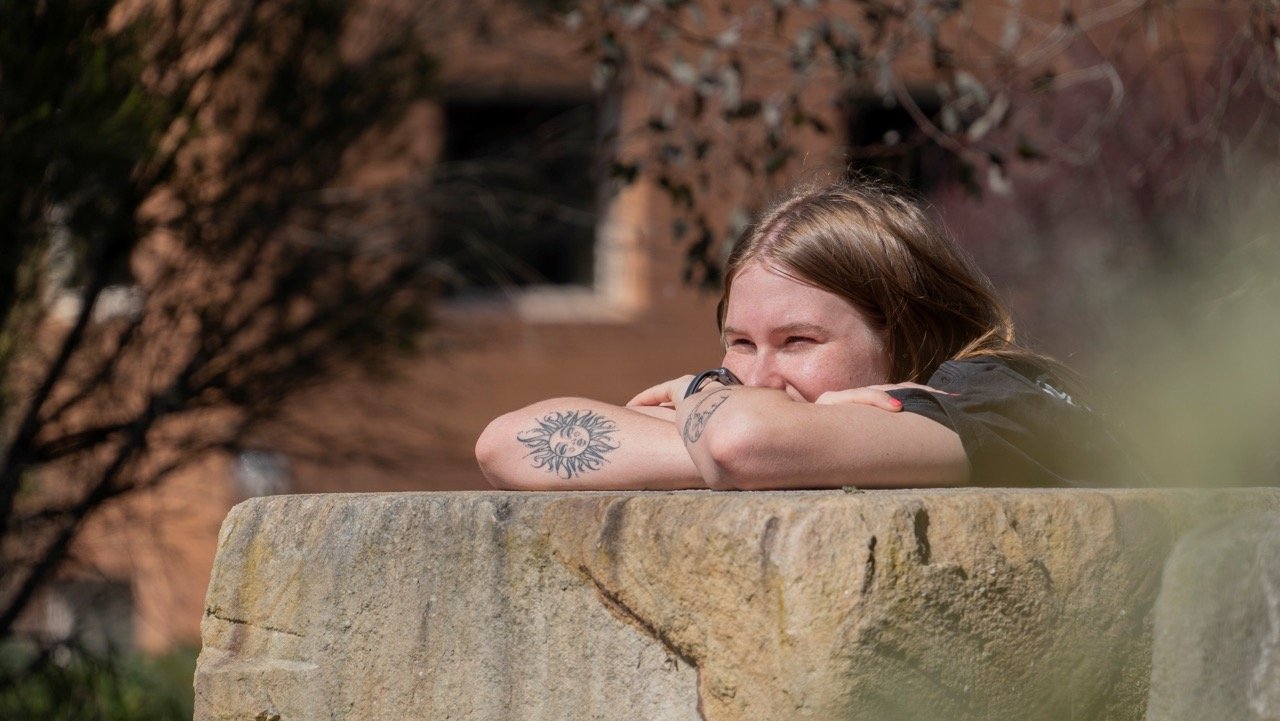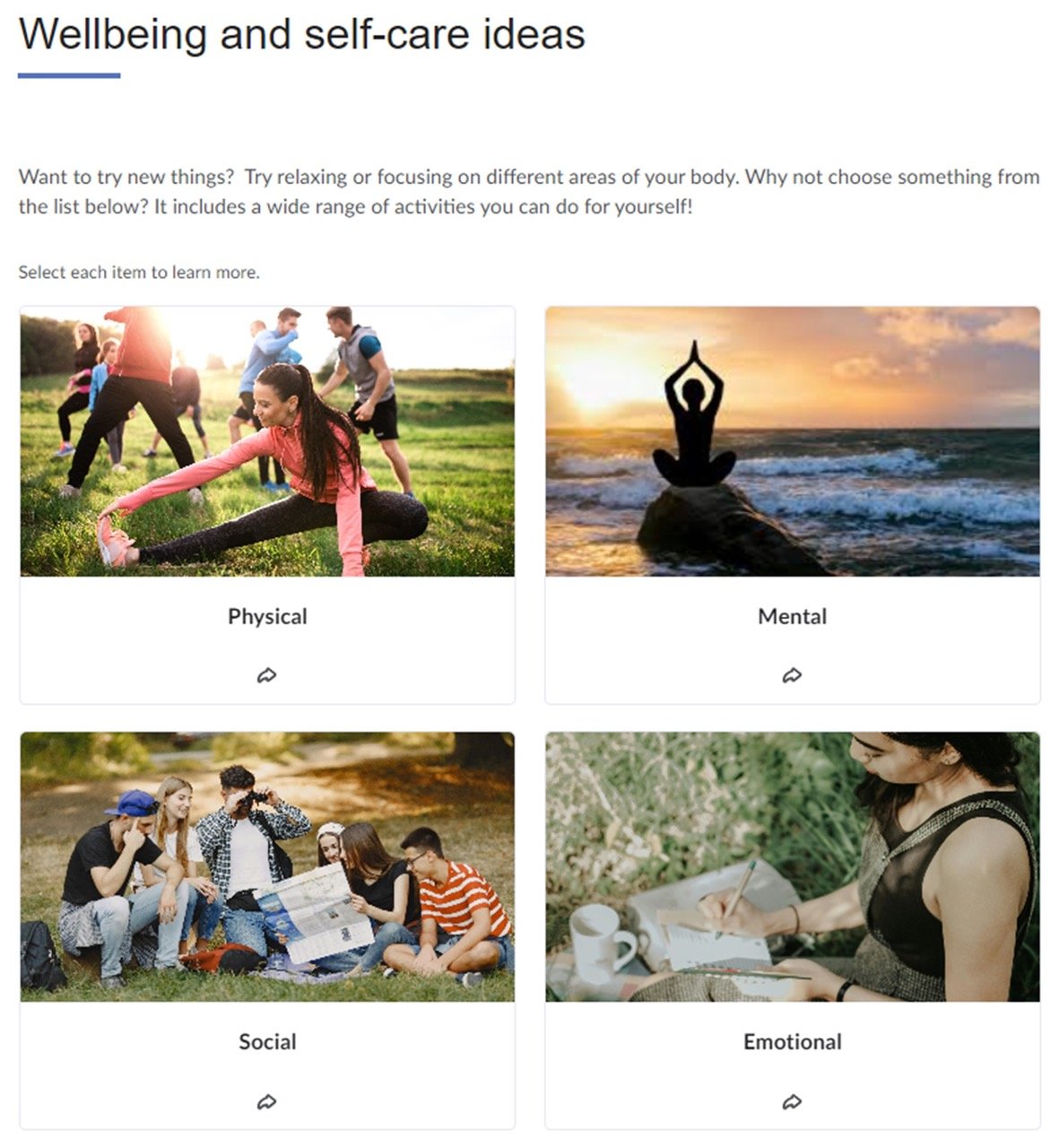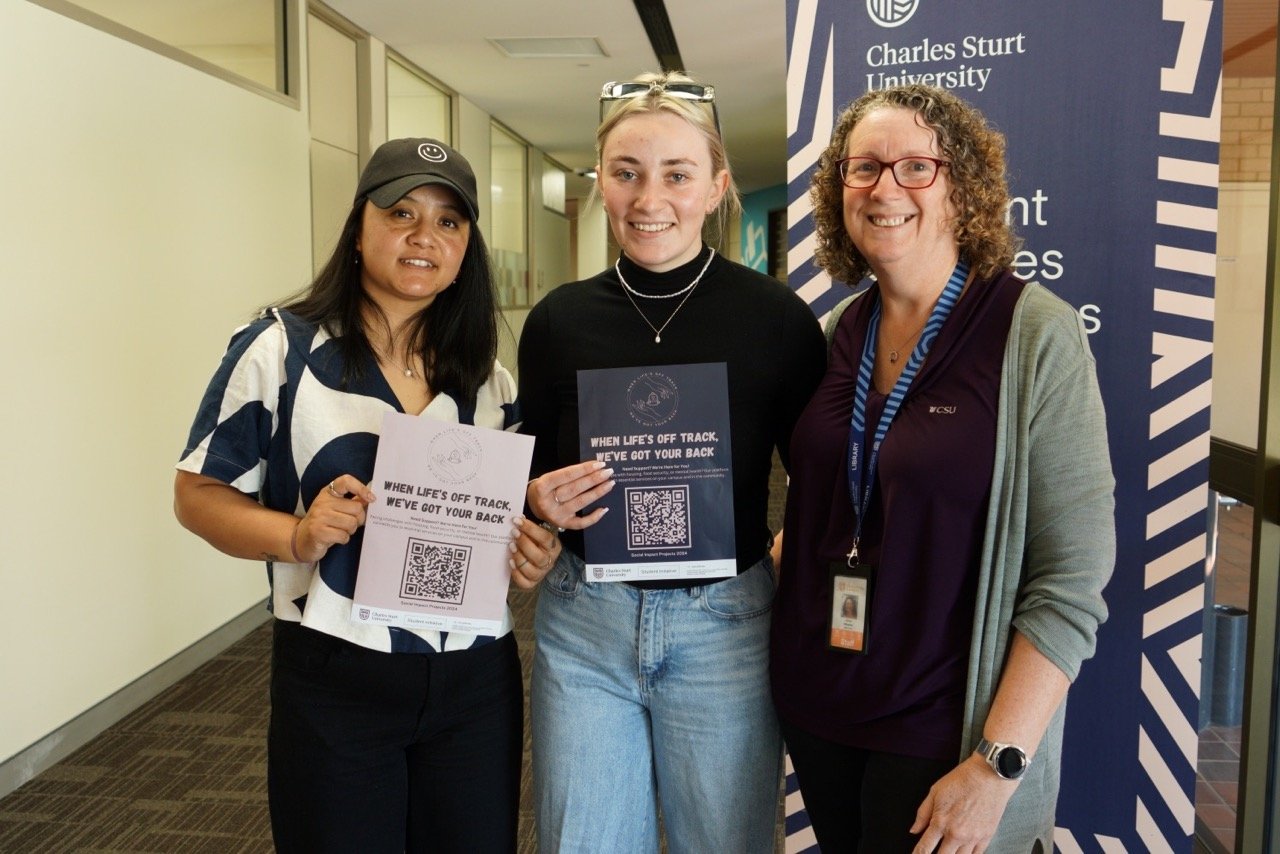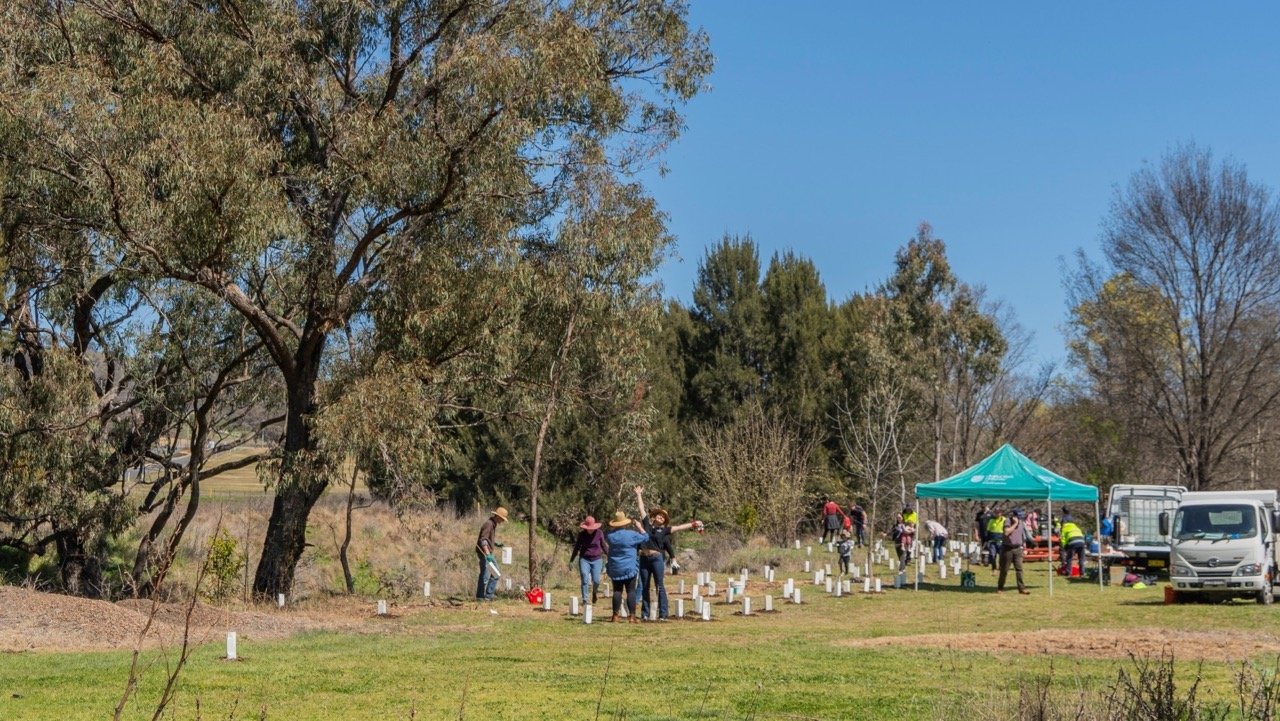
UNIVERSIDAD 2025
CHARLES STURT UNIVERSITY
By Dr. Faith Valencia-Forrester
Academic Lead Work-integrated Learning
The Future of Higher Education: creating a world worth living in
As the landscape of higher education continues to evolve, institutions are increasingly adopting hybrid models that blend in-person and digital learning. Charles Sturt University in Australia stands at the forefront of this transformation, with most of its students learning online. Recognized as the number one university for graduates securing employment after graduating, Charles Sturt implements forward-thinking strategies that enhance educational outcomes. Industry and community engagement are at the forefront of its mission. This article explores the approaches at Charles Sturt University that blend cutting-edge technology with traditional learning, creating a dynamic and flexible educational experience.
Charles Sturt’s approach to hybrid education ensures students enjoy the convenience and accessibility of online learning combined with the rich, interactive experiences of in-person classes. The collaborative environment encourages students to engage with industry, peers and professors, both virtually and face-to-face, fostering a community of innovation and support.
Connecting to the land, people of our regions, and internationally
The Wiradjuri phrase “yindyamarra winhanganha” translates to “the wisdom of respectfully knowing how to live well in a world worth living in.” Rooted in traditional Indigenous Australian knowledge, it aligns with Charles Sturt’s mission to cultivate and share wisdom to make the world a better place. For all students, local and international, the university emphasizes that we are all deeply connected to the land and people of our regions, aiming to develop holistic, forward-thinking individuals who help their communities thrive. Looking to the future of education, the university is committed to integrating innovative technologies and forward-thinking approaches to learning while fostering a culture of respect and wisdom.

Hybrid Education Model
Charles Sturt University’s hybrid education model is distinguished by its integration of online and in-person learning. With students located all over Australia and internationally, classes are offered both online and face-to-face to create a flexible, accessible, and engaging learning environment. The most innovative element of this model is its emphasis on including practical, real-world skills embedded into the curriculum through hands-on projects, work-integrated learning (WIL), community and industry partnerships, and making them available within the online learning experience.
Online and in-person learning are combined to maximize their benefits for students. Hybrid courses offer flexibility and accessibility, allowing students to learn at their own pace and from any location. Pro Vice-Chancellor Learning and Teaching, Professor Janelle Wheat is committed to ensuring that students “will have an amazing high-impact online learning experience at Charles Sturt. We are committed to providing a supportive and engaging environment that prepares them for the challenges of the future.”
The main benefits of this hybrid approach include increased accessibility for students who may not be able to attend traditional on-campus classes, enhanced engagement through interactive online tools, and the ability to apply theoretical knowledge in practical settings both online and face-to-face. Continuous feedback and support systems are embedded to address challenges, such as ensuring consistent quality across both modalities and maintaining student motivation in online courses (Mulenga & Shilongo, 2024).
In the hybrid learning model, Charles Sturt provides a variety of assessment methods, including project-based assessments, online quizzes, interactive orals, reflective practice and practical exams. Accreditation is aligned with industry standards, ensuring students are well-prepared for their professional careers (Chalmers. et al.). Every degree program at the university is supported by an industry advisory board comprised of industry representatives who inform course design and development. Industry partners are also involved in curriculum design and delivery, ensuring students are up to date with the latest industry requirements.

Flexibility, Practical Skills and Community Impact
Charles Sturt’s learning experience differs from the traditional university model by prioritizing flexibility, practical skills, and community impact. Students can participate in the university’s many innovative partnership initiatives virtually or face-to-face. There is a strong emphasis on prioritizing the “experience” in both the online and face-to-face experience of students. Professor Wheat believes it is very important to ensure that each student has a positive experience and feels connected both online and face to face, “We ensure students are connected to their teachers and each other, fostering a connection to their learning and each other.”
Our learning model: flexible, challenge-bsed and community-driven
Digital Learning and Teaching Precinct
Charles Sturt University is dedicated to leveraging innovative technologies to enhance education, with the Digital Learning and Teaching Precinct (DLTP) leading this initiative. The DLTP is a hub for generating and facilitating various projects, fostering collaboration among individuals and groups to advance technology and pedagogy. It serves as a space for product development, testing, and prototyping of new systems and technologies, including AR, VR, and AI-driven tools. These technologies are crucial in creating a dynamic, interactive learning environment shaping an innovative curriculum that aligns with the university’s Education Strategy Vision. Ultimately, the DLTP drives digital transformation for learning and teaching. Director Greggory Higgins says, “The DLTP is designed as a collaborative hub where we test and develop new tech-driven learning tools with our industry and community partners to make education more immersive and impactful.”
Simulating Real-World Practice: putting the AI in Work-Integrated Learning
The AI in Work-Integrated Learning (AIWIL) pilot brings authentic industry practice into online classrooms. It offers students AI-driven simulations to complement their traditional WIL experiences and enhance their employability. The AIWIL pilot focuses on three key fields: business, policing, and occupational therapy, providing authentic simulations of common professional scenarios students will encounter in their careers. It is planned that the AI coach will provide students with guided reflections on their experiences. By immersing students in authentic simulated interactions, such as job interviews and client conversations, the AIWIL project offers a safe, low-risk environment for developing critical skills. This approach allows students to practice these important conversations and ensures they are genuinely prepared for the challenges they will face after graduation.
Victoria, an Agricultural Business student, emphasized the value of practicing the question-and-answer communication skills which she currently struggles with. She noted, “Being able to get that practice of being put on the spot with questions like that, I think that’s important and there’s value in that.” Victoria also highlighted the benefit of AI generating questions based on previous discussions, guiding the conversation for a more human-like experience. While Lyne, an Occupational Therapy student, shared her positive experience, stating, “I think it was good, it started with a little bit of getting to know you before it jumped into the questions.” She believes the tool will be particularly helpful as she nears the end of her degree and begins looking at jobs, helping her figure out what kind of questions she will need to answer and practice.

Senior Lecturer in the School of Business Mark Frost, believes using AI to develop WIL experiences “will enhance our teaching experience by giving students an opportunity to develop their engagement, speaking, and listening skills. These are critical in today’s working environment and the software will add to the skills and knowledge that students currently develop across their studies.” Bronwyn Connelly, a Lecturer in Occupational Therapy, shared her enthusiasm for the project, saying, “We are thrilled to be part of this exciting project and look forward working to creating an innovative tool that will support and enhance student learning of practical skills.” By combining their expertise with the developers’ technical skills, they aim to create an AI bot that will provide students with the opportunity to further practice the skills required for their upcoming work-integrated learning.
Creating Impact in Our Regional Communities
Charles Sturt’s partners and collaborators are committed to practical education, community impact, and innovation. These partnerships help the university achieve its goals and continue to lead the way in hybrid education. Recent partners working with students in the Social Impact Projects commend the students for their performance and dedication throughout the projects, highlighting the impressive outcomes and the collaborative process that led to such impactful results. Emily Lawson from Headspace praised the mental health and wellbeing project, saying it was wonderful to see young people being proactive and caring about their communities. She expressed her privilege in working with them. Julie Fairley from IBM was impressed by the environmental sustainability project, noting how the students started with a large idea and distilled it into an achievable project through co-design sprints. Stuart Davis-Meehan from St Vincent de Paul Society lauded the homelessness project, emphasizing how the students listened, responded, and expanded their approach, ultimately working together as a team to address various issues. He congratulated the students and the university for their collaborative efforts. The university has developed multiple partnership opportunities across disciplines for students to work alongside industry and community partners.
Working in the Fourth Space for Social Impact
bThe university’s Social Impact Projects, which focus on homelessness, mental health, digital inclusion, disability, and the environment, are innovative, authentic virtual WIL experiences, providing students with opportunities to work alongside multiple community partners and apply their learning in meaningful ways (Valencia-Forrester, 2023) in a virtual environment.
Integration of Advanced Technology
Technology lies at the heart of our educational experience, with our app serving as a hub for personalized learning. It offers tailored learning paths, real-time skill assessments and seamless peer collaboration, ensuring a highly interactive and adaptive journey. Advanced features like AI-driven personalization and virtual reality integration empower learners to customize their studies, engage deeply with the material, and remain connected across time zones, fostering a truly global and innovative learning environment.
Bachelor of Accounting student working on the recent mental health and wellbeing social impact project, Kimberley Brunner, says, “There are so many great things about this internship, learning from some great organizations and leaders, getting to know some peers from various courses and locations, and a sense of achievement that you have contributed and made an impact for the future students of Charles Sturt University.”
Innovation Ecosystem

Charles Sturt’s’ innovation agricultural precinct AgriPark, is located in the heart of the Riverina region in Australia. It is an innovation ecosystem dedicated to agricultural research, curated collaboration, and sustainable production. By bringing together researchers, industry, government, and the community, AgriPark aims to address the significant challenges facing regional Australia. This is where collaboration, experimentation, and innovation turn world-changing ideas into reality. Partners share and test ideas, students gain practical skills, and researchers and investors can fast-track both ideation and commercialization.
Headquartered at Charles Sturt University’s Wagga Wagga campus, AgriPark is ideally positioned to harness the potential of agricultural innovation. This ecosystem thrives on the challenges, priorities, and the goals of our industry partners, government, community, and the university. Since its inception in 2016, AgriPark has tackled major issues such as improving the digital literacy of future industry leaders, demonstrating and validating new on-farm technologies, and conducting research on soil and carbon emission solutions.
Post-Graduation Support
Supporting students after graduation is a key priority at Charles Sturt. The university offers career placement services, networking opportunities, and pathways for further education. These initiatives help graduates transition smoothly into the workforce and continue their professional development (Okolie et al, 2023). A strong alumni program keeps the university connected to its students long after they graduate. Often, alumni are invited back to partner with the university for community and industry projects. Dr. Matthew Muir, co-founder of Lyka Pet Food, a large national pet food company, and Charles Sturt University alumni, has significantly contributed to the Environmental Social Impact Project. Expressing immense pride in the student interns and the university for their exemplary execution of the projects.
“As a Charles Sturt alumnus myself, I spent 6 years living on, in and around the campus at Wagga Wagga. Wiradjuri Country. So It’s very personal to me. And I’m very proud of all of you and for what you have all done to really look at increasing the social impact to everyone there. So it makes me very proud”.
Student Recruitment and Selection
The university’s recruitment strategies are tailored to meet students where they are. Matthew Granfield, Executive Director of Customer Experience at Charles Sturt University, describes a multifaceted approach to recruiting students based on varied demographic backgrounds.
“Our primary sources for student recruitment vary depending on the audience. For school-leavers, we run an extensive outreach program, engaging with more than 80,000 students each year in their schools, at careers fairs, and other events. For mature-age students, we run virtual open days and other targeted events. Both programs are supported by an extensive advertising and publicity program. We select the students that best align with our courses, which tend to be highly practical and focused on real-world skills, like nursing, teaching, and social work. Around two-thirds of our students learn online, and we are Australia’s largest online university in that respect.”
Future Innovations
Early data and success stories demonstrate the growth and success of Charles Sturt’s hybrid model. For example, the university has seen increased student engagement and satisfaction, as well as positive outcomes in terms of employability and community impact. Future innovations at Charles Sturt include the development of new online tools and resources, increased collaboration with industry partners, and implementation of advanced technologies to further enhance the learning experience (Alamri et al, 2021). Success for Charles Sturt is defined by the long-term impact on students’ careers and their positive contributions to society. The university’s goals include expanding its hybrid model, enhancing community partnerships, and continuously improving the quality of education (Charles Sturt University, 2023).
Conclusion
By combining high-impact online and in-person learning, focusing on practical skills, and engaging with the community, the university is preparing students for success in a rapidly changing world. Students are able to tailor their education to fit their lifestyle, balancing studies with other commitments while still receiving a high-quality education. Their forward-thinking approach ensures students are not just prepared for today’s job market but also equipped with the skills and knowledge to thrive in the future.
Author: Dr. Faith Valencia-Forrester, Academic Lead Work-integrated Learning at Charles Sturt University.

This article is available in Spanish via Nueva Revista. Please click HERE.
Universidad 2025 is a publication by:
Nueva Revista
Nueva Revista is a Spanish publication dedicated to analyzing contemporary society, focusing on culture, humanities, science, art, and politics. It offers in-depth analysis and expert perspectives on topics such as higher education innovation, technological advancements, social change, and public policy. Featuring contributions from renowned academics, writers, and thought leaders, the magazine fosters critical dialogue and intellectual debate, making it a key reference for those interested in the intersection of knowledge, society, and progress.
If you’d like to read this year’s edition of University 2025 in Spanish, please click below:

In collaboration with Proeduca
PROEDUCA’s objective is to provide the best online higher education to its students and it achieves this through educational commitments at three universities: The International University of La Rioja, the Online University of Mexico (UNIR Mexico), and CUNIMAD. It also offers studies located in Peru, at the Newman Postgraduate School, and in the United States, where it has a presence through MIU City University Miami.

References
Alamri, H. A., Watson, S., & Watson, W. (2021). Learning technology models that support personalization within blended learning environments in higher education. TechTrends, 65(1), 62-78.
Chalmers, D., Cummings, R., Elliott, S., Stoney, S., Tucker, B., Wicking, R., & Jorre De St Jorre, T. (2014). Australian university teaching criteria and standards project. Deakin University.
Charles Sturt University. (2023). Annual Report.
Charles Sturt University. (2023). Social impact projects at Charles Sturt University. Retrieved from Charles Sturt University website.
Kuh, G. D. (2008). Excerpt from high-impact educational practices: What they are, who has access to them, and why they matter. Association of American Colleges and Universities, 14(3), 28-29.
Mulenga, R., & Shilongo, H. . (2024). Hybrid and Blended Learning Models: Innovations, Challenges, and Future Directions in Education. Acta Pedagogia Asiana, 4(1), 1–13. https://doi.org/10.53623/apga.v4i1.495
Okolie, U. C., Nwajiuba, C. A., Binuomote, M. O., Ehiobuche, C., Igu, N. C. N., & Ajoke, O. S. (2020). Career training with mentoring programs in higher education: facilitating career development and employability of graduates. Education+ Training, 62(3), 214-234.
Strauss, J. D. (2022). Australian Higher Education Implementations of Personalized Learning: Understanding Motivations, Outcomes & Future Opportunities. University of Pennsylvania.
Valencia-Forrester, F., & Stewart, H. (2022). Creating a fourth space for social impact collaborations across boundaries: Active project-based learning and internships for GC education. In Perspectives on Lifelong Learning and Global Citizenship: Beyond the Classroom (pp. 57-76). Cham: Springer International Publishing.